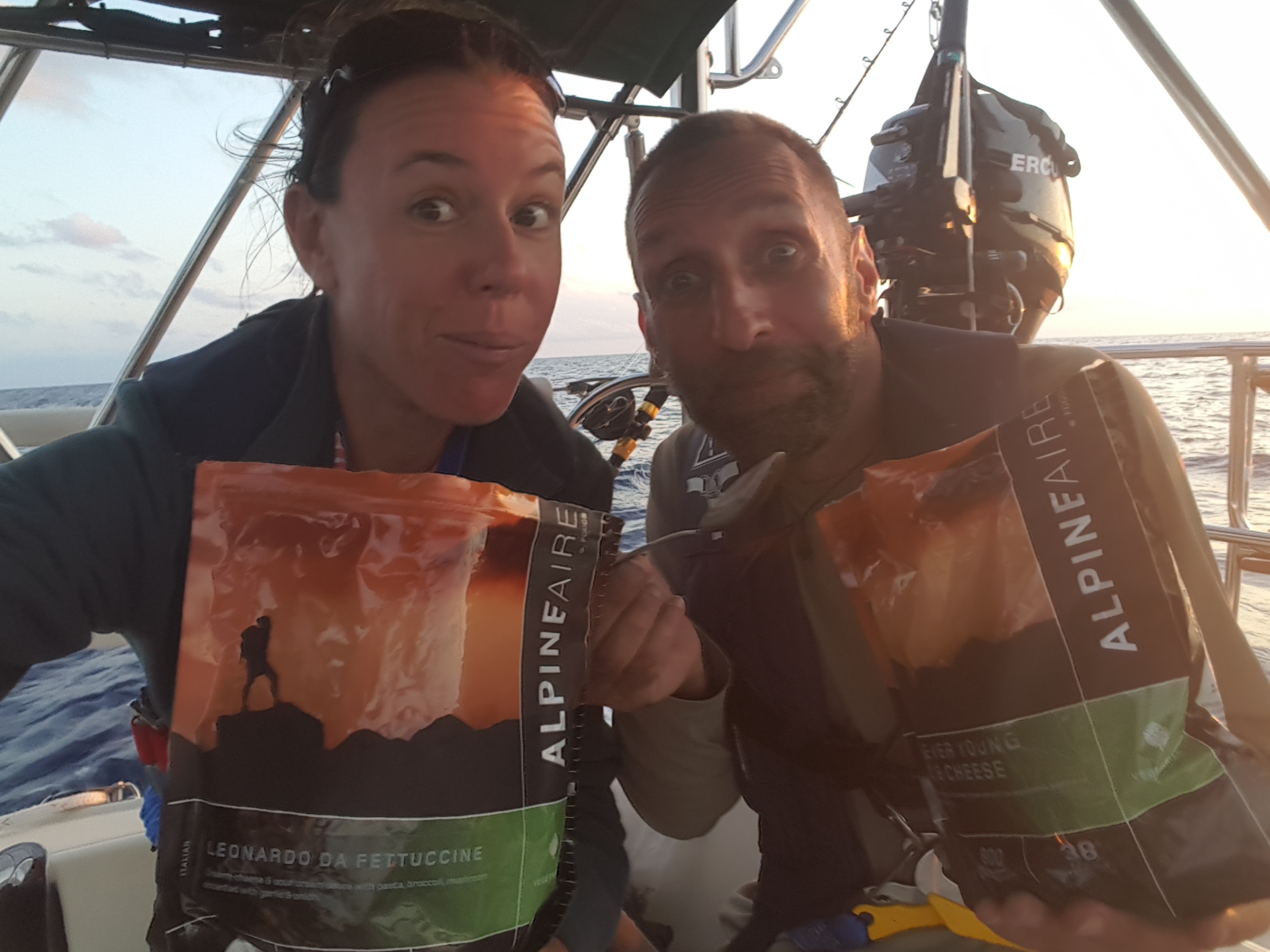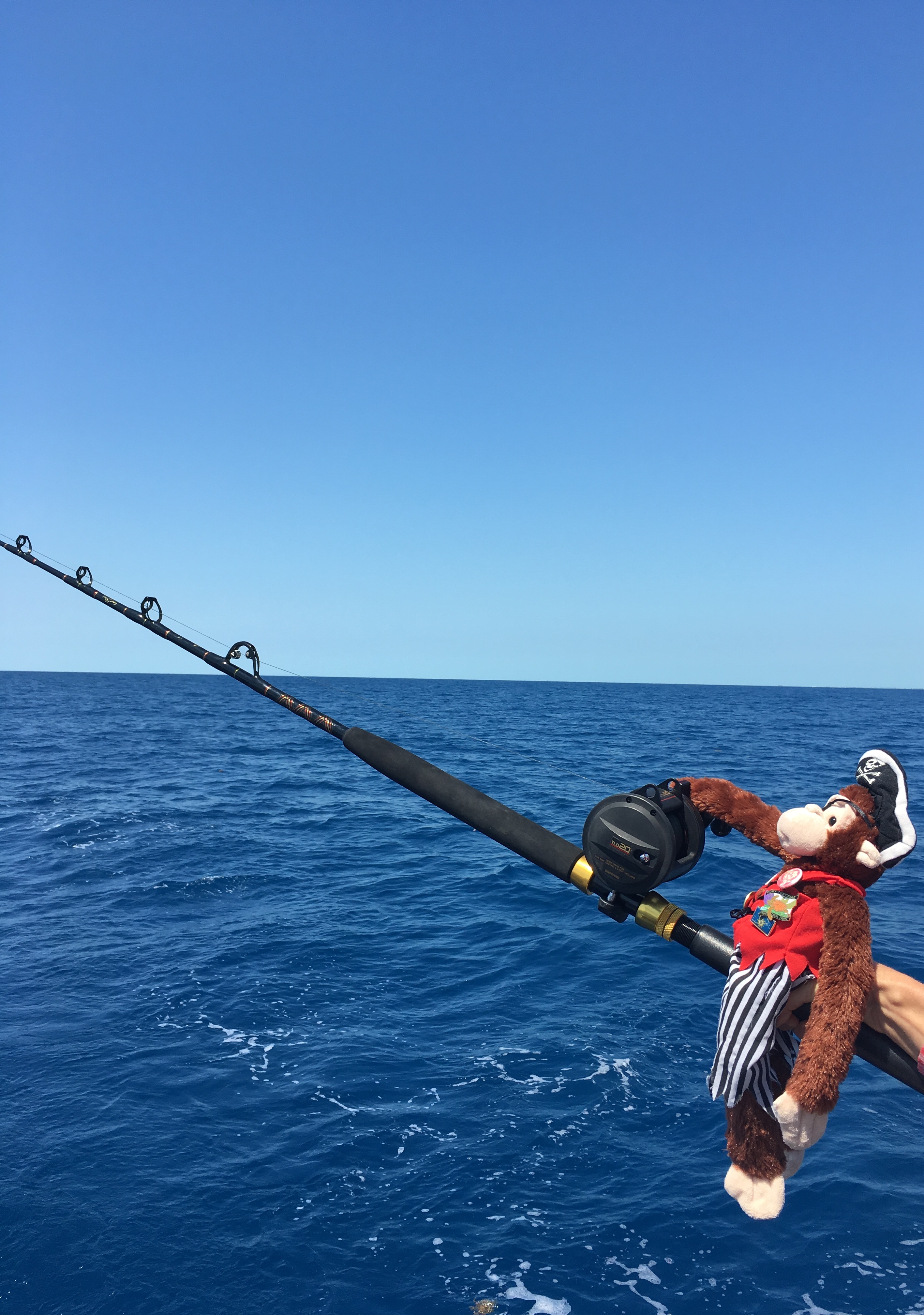

 March 20, 2018
March 20, 2018
Crossing the Gulf Stream. Sounds so simple. It is just a little 50 mile stretch of water between Florida and the Bahamas; so why does it instill such awe and fear in novice cruisers such as myself? The Well, because it’s a giant river of water that runs warm and clear at a sometimes brisk 3 knots or more! Considering Eileen usually averages about 5 knots of speed, that means we could only be making 2 knots of headway at some point! There are scary stories of big 20 ft. waves stacked up in the north flowing current, especially if the wind blows against the current. Everyone agrees you do not want to cross the stream when there is any north component to the wind direction.
Another consideration the current brought was that you need to start south of where your destination is in the Bahamas…the current averages speeds of 2-3 knots, in effect carrying you that many nautical miles for every hour you are crossing it. You can use this to your advantage of course. As we steered a course due east, we were also being carried north at the same time, so our total speed was increased towards our destination which actually lay northeast of us.
There was also the conundrum of from where and at what time should we leave. Do you want to cross at night or during the day? Do you want to make the shortest run across or just go from further south where we were? We staged at Boot Key Harbor in Marathon and considered going north to jump off from Key Largo which would mean a roughly 75 mile crossing. This would be advantageous if there continued to be only short windows of weather decent enough for us to cross comfortably. It was very important to us not to be in a rush to get there and get beat up in rough seas. In the end, we found a 48 plus hour window and decided to leave directly from Marathon and get as far east as we could in one shot…this would also allow us to bypass Bimini where we know it could be crowded (lots of cruisers were waiting for the same weather we were and it seemed like most were heading to Bimini first) and we could get stuck there a while if the weather wasn’t good. We were already running late in the season and really wanted to get down to the Exumas and spend some quality time in that region.
We left the comfort of the Boot Key Mooring Field and anchored just south of the seven mile bridge. The next morning we got up early and finished our preparations. We were both a little nervous but the weather was forecast to be fairly calm, so the ride shouldn’t be too rough. That was what we had been waiting for. Although we wish there was a little more wind for sailing instead of motoring, a safe and uneventful passage was the goal. We decided to leave at first light so we could navigate the trap buoys and got out past Sombrero Key lighthouse by about 10 am. It was a gorgeous day, we were well rested, and we had a positive attitude for the long passage ahead.
The final consideration of crossing the Gulf Stream is that there is a super-highway out there of giant 900 ft. long container ships and huge cruise ships crossing to and from ports all over the world. You have to be very alert on watch as these huge ships are going considerably faster than you are and while you can see the cruise ships lit up like cities and judge their speed and distance fairly well, it is not so with cargo ships. We knew this and had long ago purchased an AIS receiver and radar partly for just this purpose of helping us navigate shipping lanes and working through offshore fishing fleets.
All was going well. We started trading off night watches around 8:00pm and the off watch person tried to get a couple hours of sleep. By the midnight tradeoff, we had been lulled into a false sense of security by the fact we had seen all of one container ship and one cruise ship so far. Then it happened…and it happened fast. I was woken up only 3/4 of the way through my nap time by Celia’s slightly frantic voice. “Honey, can you come up here?” I heard some mild fear in her voice and wondered what was happening. I tried to shake the cobwebs out of my head and jumped up into the cockpit to see what was going on. It wasn’t as bad as I thought. “I have two giant ships crossing right in front of us…what should I do?” Celia asked. “No big deal” I thought; they are miles away, we can slow down or alter course or just wait and see if we could cross behind one or the other or maybe they would be out of the way by the time we got close.
Then it all happened at once. The AIS started beeping and there were targets everywhere. The range for the AIS was set on 10 miles. Lights we had thought were way off in the distance and of no concern to us were all of a sudden on a collision course with us and even each other. We had no less than 7 huge ships criss-crossing and surrounding us and each other. Only problem was we were an insignificant, slow moving speck to them and they cannot easily alter course or speed. We looked at each other and had a little moment of panic. We heard them talking to each other on the radio and clarifying their intentions for safely getting around each other. I will date myself here, but I very much felt like the frog in the old video game “Frogger”. Somehow, we managed to slow down, speed up, and alter course enough to not have any “wet your pants” moments, but I would be lying if I said it didn’t seem a little dicey at the time. If you look at our track across the stream, you see a little bump in the middle; that’s where this went down. Thankfully, after this, it was smooth sailing (is it still a pun if its literal?).
First of all, let me say in hindsight I would NEVER EVER want to do this without AIS. Seeing the large ships on your chart plotter with their name, length, type of vessel, speed, and course is amazingly helpful to help you navigate and avoid them. Radar also can help you figure out distance to boats and lights you may see on the open ocean that do not transmit AIS signals. This has been very helpful particularly with fishing boats.
Upon reaching Bahamian waters, we decided to go into the southernmost cut onto Bahama Banks called South Riding Rocks. Just this part of the passage was about 120 miles and we still had to make another long trip across the Bahamas Banks before we could legally check in/enter the country at Chub Cay. We got to South Riding Rock at 4:30am and nervously went through the narrow cut in complete darkness, relying on electronics and the depth sounder. We somehow stayed awake to motor the 60 or so miles across Bahama Bank and anchored at the far end south of the Northwest Channel Light in calm weather. We woke up the next day and came off the Bank and into the “Toungue of the Ocean”. Look at this on a chart. In just a couple miles, you go from 10 feet of water into 3500 ft. of water. The northwestern end is called the “Bowl”. On a south wind, the bait fish get blown up into the bowl, and the pelagic sportfish follow them in. Chub Cay Marina and Resort is a haven for sport fishermen from all over the world who come to take advantage of this dead end of deep water. We pulled up to top off fuel and water, and a nice gentleman named Dan drove me out to the airport to clear Customs and Immigration. Once back to the boat, we sailed a few miles to the east to Frazer’s Hog Key to settle in for a couple days of rest and relaxation. Tune in next time to hear all about Frazer’s Hog.
Thanks for checking in!